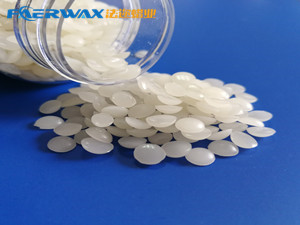With their excellent bonding properties and efficiency, hot melt adhesives have become an integral part of various industries such as packaging, woodworking, electronics, textiles and automotive. Among the many key ingredients that make these adhesives highly functional, polyethylene waxes play a key role. In this blog, we explore the many applications of polyethylene waxes in hot melt adhesives, illustrating their benefits and versatility.
Learn about polyethylene waxes:
Polyethylene wax, commonly known as PE wax, is a low molecular weight polymer derived from ethylene and is a colorless and transparent solid material. It has excellent heat resistance, chemical stability and low volatility, which makes it ideal for a variety of applications including hot melt adhesives.
Enhanced Adhesive Properties:
1. Improve the rheological properties of the adhesive:
Polyethylene waxes act as rheology modifiers in hot melt adhesives, enhancing their flow behavior and improving application properties. It effectively reduces the melt viscosity of the adhesive, resulting in smoother coating and higher processing speeds, while also promoting uniform adhesive distribution and reducing stringing problems.
2. Enhance thermal stability:
In high temperature environments, hot melt adhesives tend to lose their effectiveness due to heat-induced degradation. Polyethylene waxes reduce the rate of degradation, thereby increasing the thermal stability of these adhesives, ensuring their longevity and preventing bond failure under challenging conditions.
3. Modify the opening time and setting time:
Polyethylene waxes are effective in controlling open time (the extent of time the adhesive surface remains tacky) and set time (the time it takes for the adhesive to achieve optimum bond strength). By adding the right amount of polyethylene wax, manufacturers can fine-tune adhesion properties to meet their specific application requirements.
Multifunctional application:
1. Packaging industry:
Polyethylene waxes contribute significantly to the packaging industry by improving the adhesive properties of hot melt adhesives used for box and carton sealing and label applications. It enhances bond strength, reduces spatter, and improves the overall durability of the package.
2. Woodworking industry:
Polyethylene waxes are widely used in woodworking applications where hot melt adhesives are used to bond furniture, cabinets and laminates. It ensures excellent heat resistance, moisture resistance and adhesion to various materials, making it ideal for this industry.
3. Textile industry:
Hot melt adhesives containing polyethylene wax are widely used in the textile industry for bonding clothes, shoes and fabrics. They offer excellent flexibility and durability while ensuring washability and resistance to various environmental elements, helping to extend the life of textile products.
4. Automobile industry:
Polyethylene waxes are gaining popularity in the automotive industry, where hot melt adhesives are used to bond interior components such as door panels, headliners and insulation. It ensures excellent heat resistance, vibration resistance and long-lasting adhesion, meeting the stringent requirements of the field.
In summary:
Polyethylene waxes paved the way for numerous advances in hot melt adhesives. Its outstanding properties such as improved rheological behavior, enhanced thermal stability and wide range of applications make it an indispensable component in various industries worldwide. Innovative applications of polyethylene waxes in hot melt adhesives are expected to continue to contribute to the growth and development of various industries as technology continues to evolve, ensuring efficient and durable bonding solutions.
Post time: Sep-05-2023


